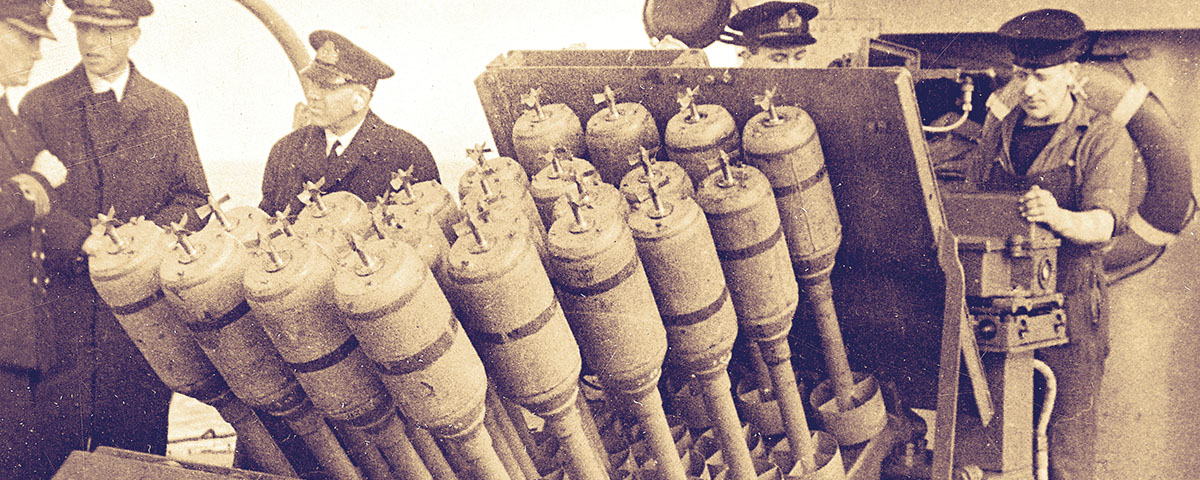THE “HEDGEHOG” ANTI-SUBMARINE PROJECTOR WAS A CONCEPTUAL LEAP FORWARD in the arsenal of weapons the Allies used against U-boats in World War II. Designed to replace the unsuccessful Fairlie Mortar, the “Hedgehog” was the brainchild of engineers in the Royal Navy’s Directorate of Miscellaneous Weapons Development, who worked in secret to devise a weapon, superior to conventional depth charges, that could fire multiple spigot mortars ahead of a warship attacking a submarine. Building on work first undertaken in the 1930s, the engineers came up with the Hedgehog—so named because the empty rows of its launchers resembled a hedgehog’s spines.
The Hedgehog entered service in 1942. In its final production version, the weapon consisted of an angled array of 24 contact-fuzed bombs, mounted in a launcher atop an escort vessel’s deck. When a ship detected a submarine, it fired the bombs ahead in a full rippling salvo (staggered two bombs at a time to reduce stress on the ship’s superstructure), out to a maximum range of approximately 270 yards. The bombs fell in an elliptical pattern about 100 feet long, each bomb 15 feet from the next (narrower than the width of a U-boat’s hull), and sank at a rate of 23 feet per second. Unlike depth charges, whose time or barometric fuzes detonated the explosive regardless of their proximity to the target, a Hedgehog bomb exploding could mean only one thing: that the enemy submarine had been hit.
The bomb’s flat nose allowed it to enter the water cleanly rather than skid along the surface.
Poor training hindered the bomb’s success at first, but once crews received proper instruction, the Hedgehog racked up impressive kill ratios—far better than those of depth charges. By the end of the war, in fact, one in every five Hedgehog attacks resulted in a kill, compared with something like one in 60 for depth charges. (Later versions of the launcher were gyro-stabilized to compensate for the rolling and pitching of the ship.) In all, Hedgehog attacks took out some 50 enemy submarines, including six in the Pacific Theater. MHQ
CHRIS McNAB is a military historian based in the United Kingdom. His most recent book is The Falklands War Operations Manual (Haynes Publishing, 2018).
[hr]
This article appears in the Summer 2018 issue (Vol. 30, No. 4) of MHQ—The Quarterly Journal of Military History with the headline: Hedgehog Anti-Submarine Projector
![]()

